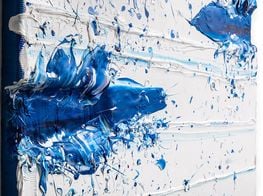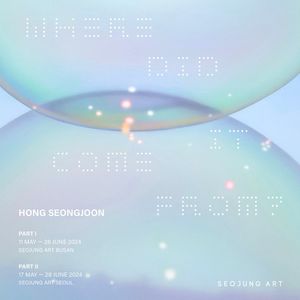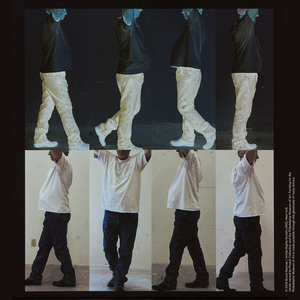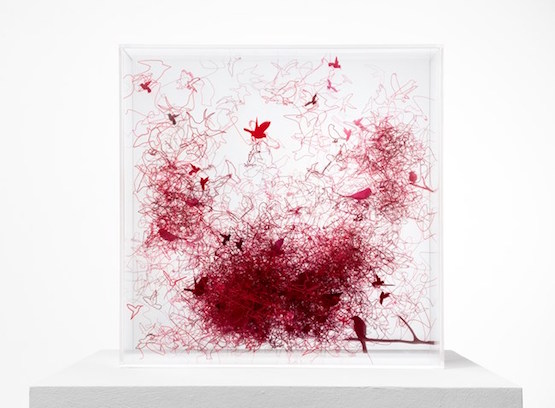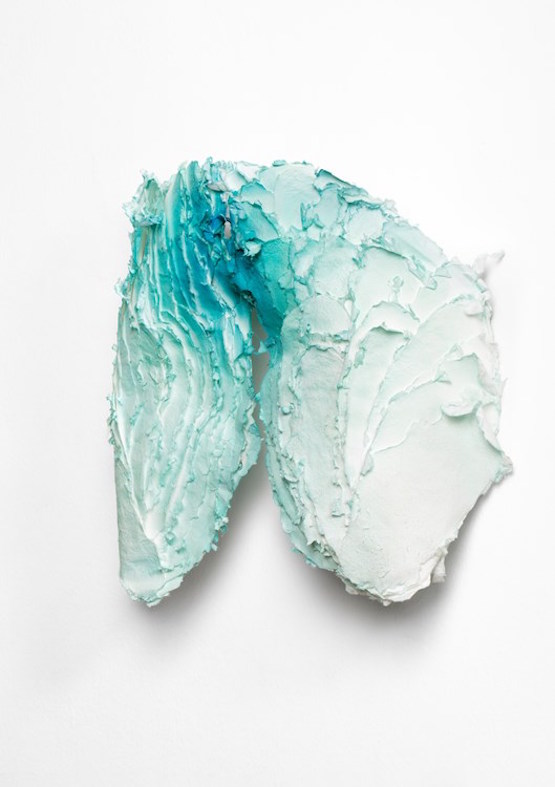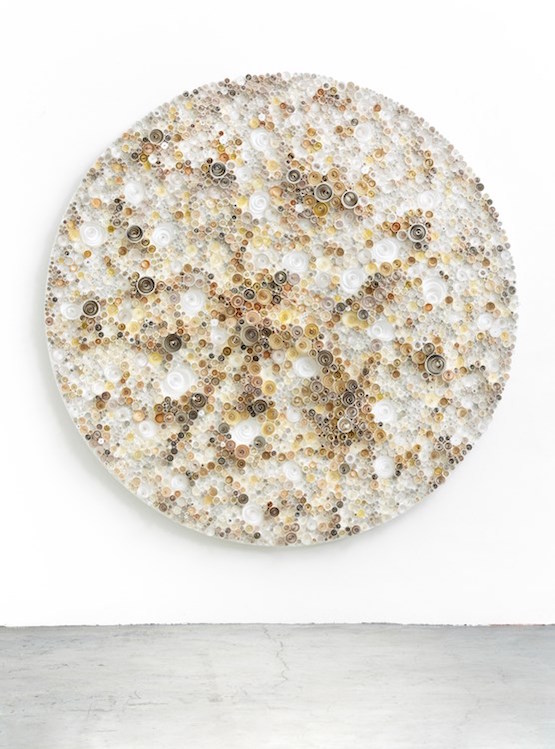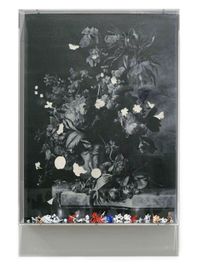Jane Lee: Possibilities of Paint
Singapore born artist, Jane Lee, has up until now been best known for her relentless interrogation of the very notion of painting.
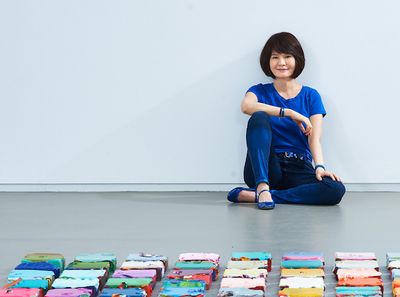
Jane Lee. Courtesy the artist and STPI, Singapore.
Experimenting with innovative techniques, materials and tools, Lee has played with the construction of painting to produce sumptuous and tactile abstract works that often merge two into three dimension. Following a residency at STPI in Singapore, the artist has embarked on a new exploration; this time she is exploring the possibilities of print, paper, animation and sound. In this Ocula Insight, Lee discusses her latest body of work.
The exhibition at STPI in Singapore includes, on a wall, the text of a poem by Maya Angelou, 'Caged Bird'. When did you discover this poem, and can you tell me if, and if so, how, the poem then influenced the ideas behind the exhibition?
At the beginning [of the residency], I was looking around for a simple motif to play with. I started thinking about paper, and this led me to think about trees, which in turn led me to think of birds. So the silhouette of birds came to my mind as a motif to use, but it had no meaning for me at this point. As I dug deeper in my explorations, I realised it linked with what I wanted to convey.
I have been reflecting on the entrapment people often feel in their daily lives so the decision was made to look into these two states of freedom and entrapment, and the bird represented these ideas very well. I discovered the poem by Maya Angelou while reading about the notion of freedom and its relationship with its antithesis. She references the two in the form of birds and instantly I saw the connection with the ideas in my exhibition.
It is interesting because your work in the exhibition at STPI, which is all new work created during your residency at STPI, signifies an important departure from your earlier work. In many ways, you had confined your practice to an exploration of painting before, but with this new work you have ventured beyond those self-determined restrictions?
Thank you for asking this. Exploring these ideas, particularly so in this residency, has certainly made me think about my practice and myself. I was trained in a very formal and classical way of painting so it took me many years to break through those two-dimensional boundaries and push paint into the three-dimensional. But I realised from this residency that I had set-up a new set of boundaries for myself. In a way, I had become 'trapped' in the presentation of my work. So, the residency has been for me a means of releasing myself from that entrapment. It has been an amazing opportunity to be able to confront my work, and jump out of the perimeter that I had created for myself.
You certainly have pushed your practice by way of this residency. In addition to exploring paper and print, you have also explored sound and animation. Can we talk about the work INNER SONGS? This involves thin layers of green flattened pulp paper stacked into tree trunk shapes, upon a bed of pulp paper. From within each tree trunk comes the sound of a bird. I am interested to discuss, with respect to this particular work, your use of sound?
I didn't plan the final outcome of this work. Like my approach to painting, things just evolved along the way with the works at STPI. With INNER SONGS, I saw the possibility of forming a tree trunk with the paper I was playing with. I also began to read different poems and started to think about the inner voices we all possess. I thought about the fear people have of breaking boundaries and letting that inner voice be heard. We are different, but we are the same: we hide our fears. So I wanted to incorporate sound to reflect these ideas of an inner voice that is trapped—in this case, the bird's chirping can be heard from within the tree trunks.
How would you define the way that your current work links to your earlier work?
Touch has always been important to me. Perhaps that was derived from my background in fashion and textile. It is always about getting 'in touch' with the material. It isn't really about planning a work, but about letting things happen: negotiating with the material and exploring interesting chances along the way. Similarly, the evolution of the works at STPI reflects how I have always approached my work.
Also, if you look at the first work I made for the residency—the COILING series—you can see the technique of coiling that I have used previously in the rolling of paint with my fingers. At STPI, I first explored the new medium of paper by coiling too, by turning and touching the material so there is a direct link there. Paper was so different to work with though. It creates something very different. The video works titled THE BIRDS and FREE BIRDS also reference the coil too, although you will find that I have gradually moved further and further away from some of these familiar processes that you would find in my earlier work.
I felt there was a clear link between your animation work and your explorations of paint. You have been pushing the boundary of paint from 2D to 3D, and to me this is also how you have approached animation and video, your video acts more as a sculptural object in a way. I was interested to discuss this further?
The video work has challenged me the most. This is the first time I have explored animation and video. The animation is projected onto this coiled hanging object, which is actually an artwork in itself. So there are actually two artworks within this piece. There is a soft dialogue between the animation and the object as the birds 'fly' freely past the coil, or gradually gather before disappearing from the coil altogether. I want to explore this media further, so I can say that this is the beginning for me. I am very excited about what will happen next. —[O]
